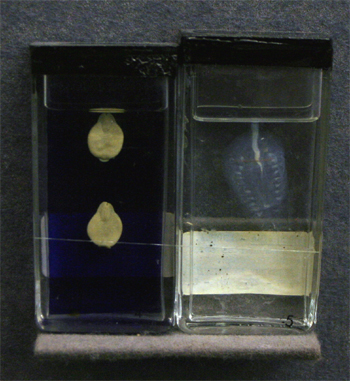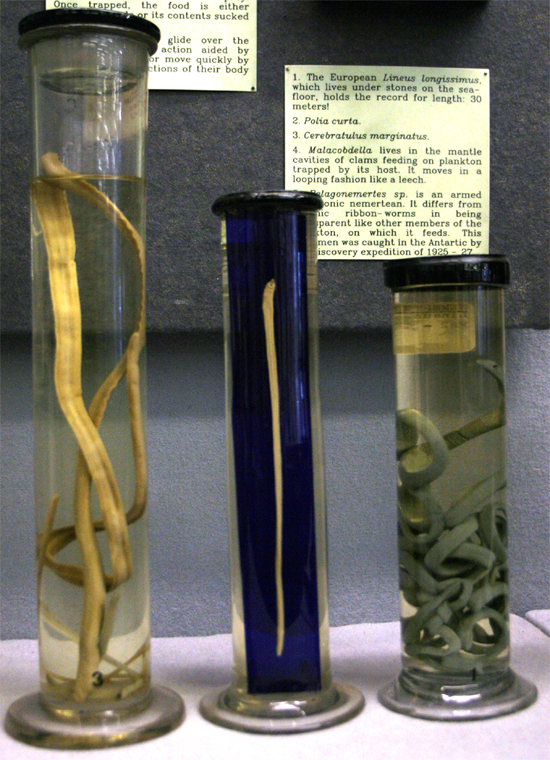
PHYLUM NEMERTEA | |
The acoelomate boot-lace or ribbon worms seem to be related to freeliving flat worms, although the sexes are separate. They are typically marine organisms, mostly benthic with a few planktonic species and one or two species living in damp habitats on land. They are renowned for the unbelievable length of some species. Nemerteans have a unique, eversible proboscis lying dorsal to the gut, which is used to catch prey. Some species use it as a lasso: glandular secretions from the proboscis wall help to hold the prey. Armed nemerteans have a stylet, which repeatedly stabs and releases toxic secretions into the prey. Once trapped the food is either swallowed whole or its contents sucked into the mouth. Ribbon worms can glide over the surface by ciliary action aided by mucus secretions or move quickly by peristaltic contractions of their body musculature. Eggs may develop directly into a small worm, but some species have a free swimming pilidium larva, which swims by means of ciliated lappets. Right:
Below:
|  |
 | |






